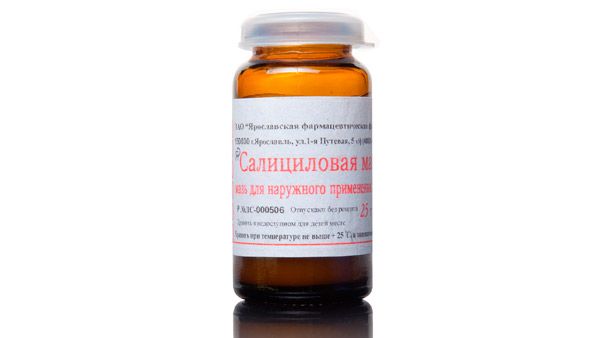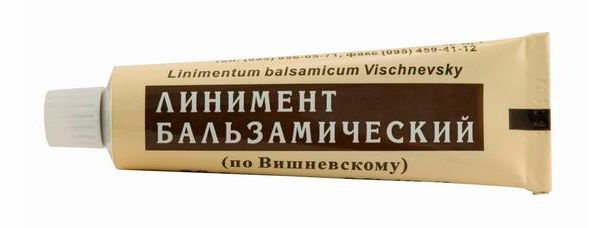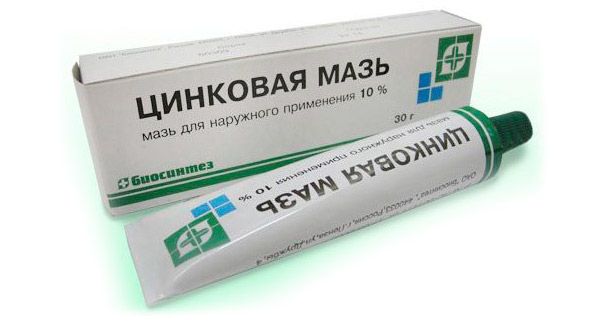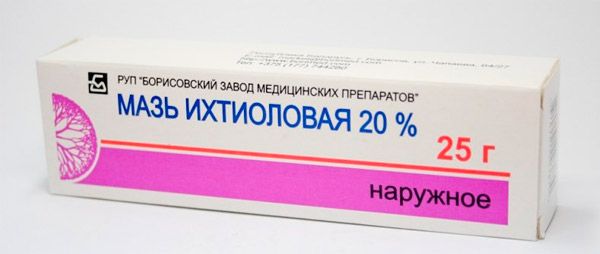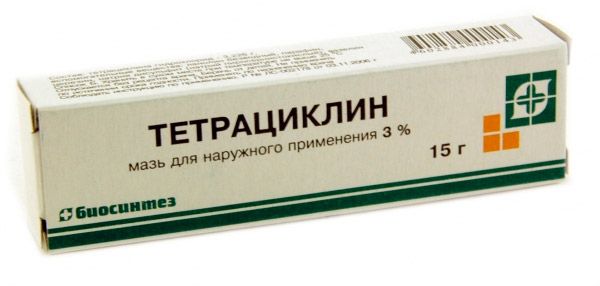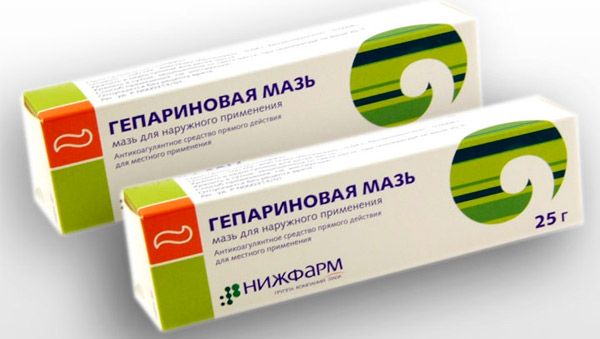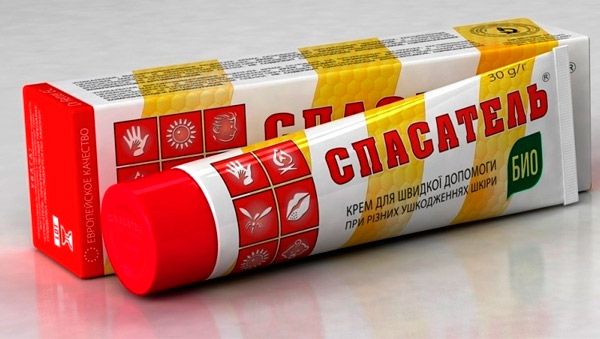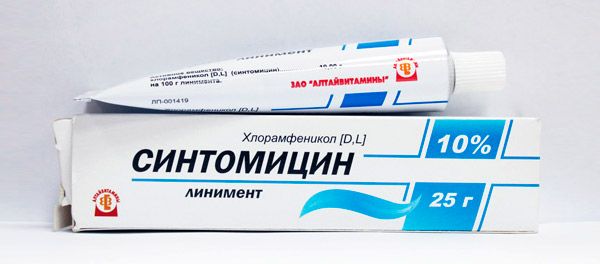
All iLive content is medically reviewed or fact checked to ensure as much factual accuracy as possible.
We have strict sourcing guidelines and only link to reputable media sites, academic research institutions and, whenever possible, medically peer reviewed studies. Note that the numbers in parentheses ([1], [2], etc.) are clickable links to these studies.
If you feel that any of our content is inaccurate, out-of-date, or otherwise questionable, please select it and press Ctrl + Enter.
Ointments for blisters
Medical expert of the article
Last reviewed: 06.07.2025
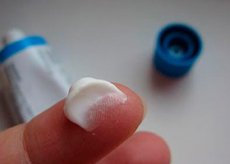
Currently, pharmacies offer patients a whole range of all kinds of external preparations to get rid of calluses or corns. It is impossible to even remember the entire list of existing products, and there is no need to do so, because the active components of such products are mostly similar. For example, the most common product - ointment for calluses - most often contains acids. This can be salicylic or benzoic acid - substances that soften the callus, thereby facilitating its further removal.
In addition, many ointments for corns contain vegetable oils - soybean, grape, mustard, linseed. The oil base helps to soften the keratinized area of the skin, and when used on healthy skin, it serves as a preventive measure for the formation of growths. Castor oil, which is often added to ointments, should be singled out separately. This component stimulates local blood flow, increases tissue viability, and also acts quickly and effectively. The combination of castor oil and glycerin is especially good. This combination is often found not only in pharmaceutical preparations, but also in folk recipes for getting rid of corns.
 [ 1 ]
[ 1 ]
Indications for the use of ointments for corns
Corns are hard, painful growths on the skin that appear mainly in the heel area, on the outside of the foot and toes. These growths are small in size (which distinguishes them from calluses) and have clearly defined contours.
Corns can be dry or weeping. Weeping corns differ from dry corns in that they can contain serous exudate or bloody contents. All this is explained by damage to the vascular system and tissues. Over time, a weeping growth can become dry – in this case, a kind of “root” or “core” is formed in the corn. Dry growths are more difficult to treat and take longer.
As for corns, which are often confused with true calluses, they are a roughening of some areas of the skin on the feet. Such roughening is caused by wearing uncomfortable shoes, flat feet, prolonged walking or standing. Corns are also distinguished by the absence of a “root” and their relatively superficial location.
Ointments for corns are great for removing calluses as well. Such preparations are sometimes used as a preventative measure against rough skin on the feet, or before pedicure procedures.
By the way, ointment is not the only form of preparation for removing calluses. Often for this purpose, plasters, gels and special solutions are used, which are added to hot water to steam the rough skin.
Names of ointments for corns
Salicylic ointment
|
|
Pharmacodynamics and pharmacokinetics |
Local application of salicylic acid provides bactericidal and keratolytic action. The active component enters the bloodstream in negligible quantities and has no effect on the body. |
Using Corn Ointments During Pregnancy |
No studies have been conducted. |
Contraindications for use |
Tendency to allergy to salicylates. |
Side effects of corn ointments |
Feeling of itching and dryness, allergies. |
Method of administration and dosage |
To eliminate calluses, use a 10% ointment, which is applied under a bandage or napkin. Duration of therapy is from 1 to 3 weeks. |
Overdose |
Side effects may increase. |
Interactions with other drugs |
Multiple keratolytics should not be used on the same skin area. |
Storage conditions and shelf life |
Stored under normal conditions for up to 3 years. |
Vishnevsky ointment
|
|
Pharmacodynamics and pharmacokinetics |
A well-known antiseptic based on the properties of tar, xeroform and castor oil. Eliminates inflammation, dries. |
Using Corn Ointments During Pregnancy |
Not recommended for use by pregnant and lactating women. |
Contraindications for use |
Excessive sensitivity of the skin, significant sizes of affected skin, tumors. |
Side effects of corn ointments |
Manifestations of allergies, increased ultraviolet sensitivity. |
Method of administration and dosage |
Use twice - in the morning and at night, under a bandage, until the callus softens. |
Overdose |
Increased side effects. |
Interactions with other drugs |
No information available. |
Storage conditions and shelf life |
Can be stored for up to 5 years in a cool place. |
Zinc ointment
|
|
Pharmacodynamics and pharmacokinetics |
External agent with drying, adsorbing and antiseptic action. Eliminates signs of inflammation and tissue irritation. |
Using Corn Ointments During Pregnancy |
Not recommended for use by pregnant women. |
Contraindications for use |
Tendency to allergic processes. |
Side effects of corn ointments |
Allergy. |
Method of administration and dosage |
Use locally, up to 3 times a day. |
Overdose |
No cases have been recorded. |
Interactions with other drugs |
It is not recommended to mix with other ointments and creams. |
Storage conditions and shelf life |
Store at normal temperature for up to 4 years. |
Ichthyol ointment
|
|
Pharmacodynamics and pharmacokinetics |
A product based on ichthyol, has significant anti-inflammatory and analgesic effects. Does not enter the systemic circulation. |
Using Corn Ointments During Pregnancy |
Allowed for use, provided that it does not come into contact with mucous membranes. |
Contraindications for use |
Not used in pediatrics, as well as in patients with a tendency to allergic reactions. |
Side effects of corn ointments |
Allergic processes that are expressed in skin reactions. |
Method of administration and dosage |
Apply carefully, under a bandage or gauze, up to 3 times a day. |
Overdose |
External overdose is considered unlikely. |
Interactions with other drugs |
Do not use on the same skin area with other external medications. |
Storage conditions and shelf life |
Can be stored for up to 5 years under normal conditions. |
Tetracycline ointment
|
|
Pharmacodynamics and pharmacokinetics |
Tetracycline ointment is an antibiotic preparation for external use. It relieves the condition of inflamed calluses. Pharmacokinetic properties have not been studied. |
Using Corn Ointments During Pregnancy |
Not recommended. |
Contraindications for use |
Allergic tendency, fungal pathologies, children under 11 years of age. |
Side effects of corn ointments |
Skin photosensitivity, hyperemia. |
Method of administration and dosage |
Apply under a bandage, up to 2 times a day. Duration of therapy is 2-3 weeks. |
Overdose |
No data available. |
Interactions with other drugs |
Not studied. |
Storage conditions and shelf life |
Store in the refrigerator for up to 2 years. |
Heparin ointment
|
|
Pharmacodynamics and pharmacokinetics |
Anticoagulant ointment, exhibits antithrombotic, anti-inflammatory and antiexudative properties. Does not soften the stratum corneum, but improves local blood circulation. |
Using Corn Ointments During Pregnancy |
Not recommended in the second half of pregnancy. |
Contraindications for use |
Tendency to allergic response. |
Side effects of corn ointments |
Allergy. |
Method of administration and dosage |
Use as needed to relieve swelling and bleeding. |
Overdose |
Increased vascular permeability. |
Interactions with other drugs |
Enhance the effect of NSAIDs. |
Storage conditions and shelf life |
Store in a cool place for up to 3 years. |
Rescuer ointment
|
|
Pharmacodynamics and pharmacokinetics |
A combined preparation with a nourishing, restorative and softening effect. The ointment's action is fast and long-lasting. |
Using Corn Ointments During Pregnancy |
Can be used by pregnant women. |
Contraindications for use |
Possibility of allergy. |
Side effects of corn ointments |
Allergy. |
Method of administration and dosage |
Use under a bandage during the day and at night. |
Overdose |
No description. |
Interactions with other drugs |
Do not use simultaneously with iodine alcohol solution and hydrogen peroxide. |
Storage conditions and shelf life |
Store at room temperature for up to 2 years. |
Synthomycin ointment
|
|
Pharmacodynamics and pharmacokinetics |
The ointment belongs to a group of antibiotics with the active component chloramphenicol. |
Using Corn Ointments During Pregnancy |
Use with great caution. |
Contraindications for use |
Allergies, fungal pathologies, eczema, psoriasis. |
Side effects of corn ointments |
Allergy. |
Method of administration and dosage |
Use under a bandage once every 1-3 days. |
Overdose |
Increased side effects. |
Interactions with other drugs |
Should not be combined with ethyl alcohol, sulfonamides, or antifungal agents. |
Storage conditions and shelf life |
Store in the refrigerator for up to 2 years. |
Bensalitin ointment for bloody blisters |
|
Pharmacodynamics and pharmacokinetics |
A preparation based on salicylic and benzoic acids, Vaseline. It has a cumulative effect, which reduces the risk of recurrence of calluses. |
Using Corn Ointments During Pregnancy |
Allowed for use, but with caution. |
Contraindications for use |
Do not apply to bleeding or damaged calluses. |
Side effects of corn ointments |
Allergy. |
Method of administration and dosage |
Apply under a plaster or bandage twice a day. Duration of treatment – until the callus softens as required. |
Overdose |
No data available. |
Interactions with other drugs |
Not described. |
Storage conditions and shelf life |
Store at room temperature for up to 2 years. |
Keratolytic ointments for corns
Keratolytic ointments are external medical preparations that are characterized by softening, dissolving and rejecting the keratinized epidermal layer of tissue. The composition of these preparations necessarily includes keratolytics, which are, for example, salicylic and lactic acids, urea, resorcinol, etc.
Simultaneously with softening and dissolving tissue keratin, keratolytics help remove the overgrown stratum corneum from healthy skin. If the concentration of the keratolytic substance is insufficient, such dissolution does not occur: the process is limited to exfoliation of the surface layer.
The following drugs belong to the category of keratolytic ointments.
- Belosalik is an ointment for dry calluses, which can also be used to treat psoriasis, eczema, ichthyosis, atopic dermatitis, etc. Belosalik contains salicylic acid and betamethasone - components due to which the ointment exhibits anti-inflammatory, decongestant, antihistamine, antimicrobial, antifungal and keratolytic properties.
The preparation is applied to the affected area of skin up to 3 times a day, rubbing in a little. However, the best effect is achieved when applying the ointment under a bandage, preferably at night. Duration of treatment is 2-3 weeks.
Analogues of Belosalik ointment include such drugs as Betadermic, Betnovate, Diprosalik.
- Keratolan is a combined ointment for calluses on the heels and toes. The main components of the ointment are urea, lactic acid and betaine, which together have a keratolytic, bactericidal and fungicidal effect. Keratolan is applied under a bandage twice a day until the callus softens.
- Kolomak is a healing ointment for calluses based on salicylic acid. It is a non-steroidal anti-inflammatory drug. Kolomak is used externally under a bandage for three to four days, after which the callus is removed. It is not recommended to use the ointment for longer than one week.
- Sulfur-salicylic ointment is one of the effective representatives of ointment for corns with a core. Due to the properties of salicylic acid, the drug has a keratolytic, antimicrobial, irritating and anti-inflammatory effect. The ointment is used under a bandage for 3-4 days, but not more than 7 days. Salicylic acid should not be applied to areas of the skin where there are moles or warts.
- Elokom C ointment is an ointment for calluses on the hands, which is often used to treat psoriasis. The active ingredients of the ointment are salicylic acid and mometasone. Elokom C relieves inflammation, constricts blood vessels, eliminates discomfort, and provokes exfoliation of keratinized skin by dissolving the binding intercellular substance. The ointment is used under a bandage twice a day until the thickened skin softens.
- Lorinden C is a combined ointment for wet calluses and other diseases with increased formation of the stratum corneum. The action of the drug is anti-inflammatory, anti-edematous, anti-allergic, keratolytic and hypothermic. The active component flumethasone helps reduce exudation and relieve swelling. Salicylic acid softens the callus, restores local immunity, protects the skin from bacteria and fungi. Lorinden is best used under a bandage, 2-3 times a day. After eliminating exudation and softening the compaction, the callus can be removed by pre-steaming in a warm bath.
At first glance, a callus may seem like a completely harmless thickening, but this is not entirely true: large skin keratinizations in the process of growth sometimes lead to serious discomfort and pain. Because of this, it is not recommended to ignore treatment. It is better to immediately, when the first signs appear, use an ointment for calluses, which will help eliminate the problem quickly and effectively.


